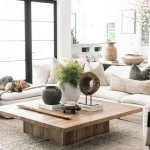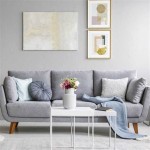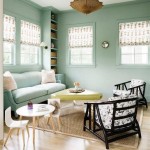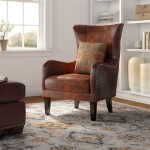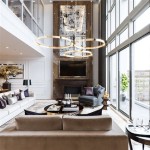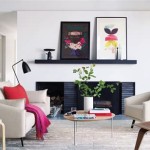How to Set Up a Long Living Room
Long living rooms can present unique design challenges. The elongated layout can feel awkward if not properly addressed, leading to a space that feels disconnected and lacks visual harmony. However, with careful planning and a strategic approach, these spaces can be transformed into inviting and functional areas. This article will explore key principles and techniques for effectively setting up a long living room.
The primary goal is to break up the length of the room and create distinct zones that serve different purposes. This can be achieved through furniture placement, area rugs, varying lighting schemes, and strategic use of color and texture. Without these considerations, the space risks feeling like a hallway rather than a cohesive living area.
Before embarking on any decorating project, it is crucial to accurately measure the dimensions of the room, including the placement of windows, doors, and any architectural features like fireplaces or built-in shelving. These measurements will serve as the foundation for determining the optimal furniture layout and scale. A floor plan, either hand-drawn or created using design software, can be invaluable for visualizing different arrangements and preventing costly mistakes.
Establish Distinct Zones
Dividing the long living room into functional zones is paramount. Common zones include a seating area for relaxation and conversation, a media center for entertainment, and potentially a dining area or a home office nook. The number and type of zones will depend on the homeowner's lifestyle and needs.
Seating Area: This is often the focal point of the living room. Arrange furniture to encourage conversation and create a sense of intimacy. Consider a sofa, armchairs, and accent chairs positioned around a coffee table. The arrangement should allow for comfortable traffic flow and avoid blocking pathways. Avoid pushing all furniture against the walls, as this can exacerbate the feeling of length. Instead, float furniture in the center of the room to create a more inviting and balanced layout.
Media Center: If the living room includes a television, designate a specific zone for entertainment. A media console provides storage for electronic devices and accessories. Ensure the television is positioned at a comfortable viewing distance from the seating area. Consider incorporating shelving or built-ins to display books and decorative items, adding visual interest to the space.
Dining Area or Home Office: Depending on the space and needs, a portion of the long living room could be used for dining or a home office. A small dining table and chairs can create a casual eating area, while a desk and comfortable chair can establish a functional workspace. Use screens or partitions to visually separate these zones from the main seating area.
Strategic Furniture Placement
The arrangement of furniture is critical in shaping the flow and functionality of the long living room. The goal is to create visual interest and break up the elongated space. Avoid simply lining furniture along the walls; instead, experiment with different arrangements that promote conversation and create a sense of intimacy.
Anchoring with Rugs: Area rugs serve as visual anchors, defining each zone within the long living room. Use rugs of varying sizes and colors to delineate different areas. For example, a large rug can define the seating area, while a smaller rug can designate the dining area. Ensure the rugs are appropriately sized for the furniture arrangement, with at least the front legs of sofas and chairs resting on the rug.
Creating Visual Breaks: Avoid placing all furniture flush against the walls. Floating furniture in the center of the room can create a more inviting and balanced layout. Consider using consoles, bookshelves, or even strategically placed plants to create visual breaks and define pathways. These elements help to break up the long, straight lines of the room and create a more dynamic space.
Utilizing Vertical Space: Take advantage of the vertical space in the room by incorporating tall bookshelves, artwork, or mirrors. These elements draw the eye upward, preventing the space from feeling too horizontal. Tall plants can also add visual interest and create a sense of height.
Traffic Flow: Consider the natural traffic flow through the room when arranging furniture. Ensure pathways are clear and unobstructed, allowing for easy movement between zones. Avoid placing furniture in a way that forces people to navigate around obstacles.
Lighting and Color Strategies
Lighting and color play a crucial role in setting the mood and defining the character of the long living room. A well-designed lighting scheme can enhance the functionality of each zone, while a carefully chosen color palette can create a sense of harmony and visual interest.
Layered Lighting: Avoid relying solely on overhead lighting. Instead, create a layered lighting scheme that incorporates ambient, task, and accent lighting. Ambient lighting provides overall illumination, while task lighting is used for specific activities like reading or working. Accent lighting highlights architectural features or decorative elements.
Varying Light Sources: Use a combination of floor lamps, table lamps, and recessed lighting to create a dynamic and inviting atmosphere. Place floor lamps in corners to brighten dark areas and add height to the room. Table lamps can provide task lighting for reading or working, while recessed lighting can highlight artwork or architectural features.
Color Palette Considerations: The color palette should be cohesive and complement the overall style of the room. Lighter colors can make the room feel more spacious, while darker colors can create a sense of intimacy. Consider using a neutral color for the walls and incorporating pops of color through accessories, artwork, and textiles.
Creating Visual Interest with Color: Use different shades and tones of the same color to create depth and visual interest. Consider painting an accent wall in a bold color to add a focal point to the room. Use contrasting colors to define different zones or highlight specific features.
Maximizing Natural Light: Take advantage of any natural light sources in the room. Keep windows clear and unobstructed to allow as much light as possible to enter the space. Use sheer curtains or blinds to filter the light and create a soft, diffused glow.
In addition to these key points, consider incorporating mirrors to reflect light and create the illusion of more space. Mirrors can be strategically placed to visually widen the room and enhance the overall sense of openness. Texture also plays a crucial role in adding visual interest and creating a comfortable atmosphere. Incorporate a variety of textures through fabrics, rugs, and decorative accessories. Consider using materials like wool, linen, velvet, and leather to add depth and richness to the space.
The integration of artwork and accessories is essential for personalizing the space and adding character. Choose artwork that complements the overall style of the room and reflects the homeowner's personality. Use accessories like throw pillows, blankets, and decorative objects to add pops of color and texture. Avoid cluttering the space with too many items; instead, curate a collection of meaningful pieces that tell a story.
Furthermore, the selection of window treatments can significantly impact the overall aesthetic of the long living room. Choose window treatments that complement the style of the room and provide the desired level of privacy and light control. Consider using long curtains to add height to the room or Roman shades to create a more streamlined look. The hardware should also be carefully chosen to complement the overall design scheme.
Finally, remember that setting up a long living room is an iterative process. Don't be afraid to experiment with different layouts and arrangements until a design is achieved that feels both functional and aesthetically pleasing. The goal is to create a space that is comfortable, inviting, and reflects the homeowner's unique style and needs. By carefully considering the principles outlined in this article, a long living room can be transformed from a challenging space into a beautiful and functional living area.

How To Arrange Furniture In A Long Living Room Setting For Four Interiors

Working With A Long Narrow Living Room

How To Decorate A Long Or Narrow Living Room Solutions For Tricky Spaces

How To Decorate A Long Narrow Living Room Jamie Lundstrom

How To Arrange Furniture In A Long Living Room 2025 Grace My Space

Divide And Conquer How To Furnish A Long Narrow Room

How To Lay Out A Narrow Living Room Emily Henderson

How To Decorate A Long Narrow Living Room

7 Tips For Arranging Furniture In A Long Narrow Living Room

Ways To Arrange Furniture In A Narrow Living Room Kate Wiltshire Design

